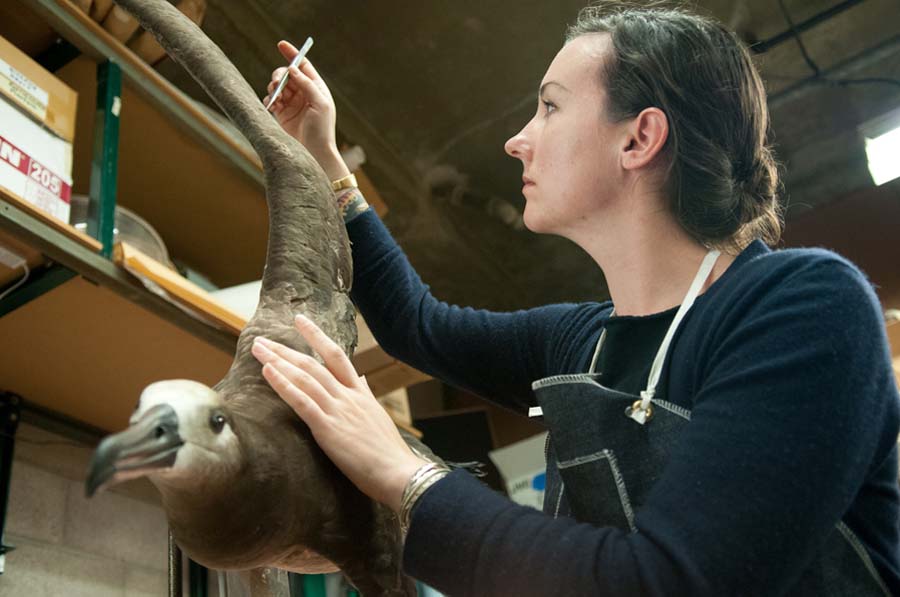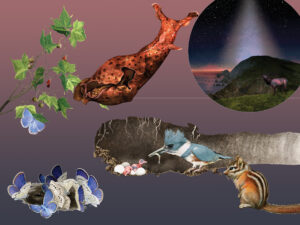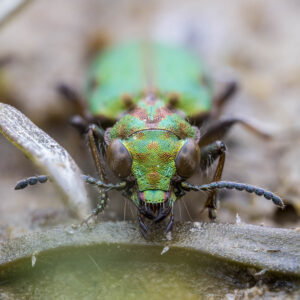Of the many specimens included in the new natural sciences gallery at the Oakland Museum of California, Alicia Goode has prepared somewhere between 75 and 100 new specimens and refurbished many, many more than that. Senior curator Douglas Long estimates that about 1,500 species are represented in the gallery one way or another. Two more sections of the gallery, on the Tehachapis and Coachella Valley, will open later this year.
What’s your role at the museum?
I am the taxidermist for the Natural Sciences Renovation Project. I have been busy producing all of the new taxidermy that will be on display in our new gallery. One of my favorite new mounts is a domestic goat. It was a challenge to put together because the form [an animal mannequin over which the skin is placed] had to be modified for a custom fit. Commercial taxidermy supply companies have an assortment of forms available, but since hunted game species are the highest in demand, there are not many forms for domestic animals out there. I had to settle for a big-horn sheep form and spend some time changing the shape and size of it to match a dairy goat’s anatomy.
In addition to creating new specimens for our exhibits, I am restoring many old taxidermy mounts that have been packed away in storage. The largest, and one of the oldest I have worked on, is probably a grizzly bear that was most likely mounted before 1920.
Where do you get new specimens?
Almost all of our new specimens are salvaged. We have working relationships with our local wildlife rehabilitation hospitals. The hospitals save carcasses of animals that did not make it so they can have a new life in the museum. It’s great because we are able to take things that would otherwise be discarded and preserve them as specimens that serve an educational purpose.
Our museum has special collecting permits and salvage permits that allow us to collect new plants, insects, and animals when the need arises. We also pick up animals that were killed by cars, flew into windows, or died naturally.
How did you get into this kind of work?
My love of natural history has been lifelong. As a little kid I spent most of my time poking through grass and bushes with a stick in one hand and a field guide in the other. I would rather be sitting outside in the mud than playing with toys. By the time I was ten, I had collections of skulls, insects, rocks, and leaves. I even remember making tiny shoebox dioramas out of the things I collected to give to my friends.
I got my first job after school when I was 13, cleaning skulls and mounting insects for the Bone Room, a natural history shop in Berkeley. I was given and hourly wage in store credit for my “volunteer time” until I was old enough to have on the books. I met some great people in my time there and connected with local museums. After college and continued work in specimen preparation, I began my museum career as a preparator and taxidermist. My current position here at OMCA couldn’t be better; it’s my dream job.
What was it like doing the taxidermy on the floor of the museum during the exhibit previews last fall? Any surprising responses?
It’s a lot of fun for me. I love being able to give visitors a peek behind the scenes to see something they have never seen before. You might think that skinning an animal in a public forum would be too graphic, or that it might get a negative reaction. What is surprising to me is that in the dozens of times I have given demos like this, I have never had a bad reaction.
Kids really love to see the process, which is especially rewarding for me. There are a few museum visits from when I was a kid that stuck in my mind over the years and some of the things I learned were very formative. I can totally relate to the awe these kids experience when they visit the museum, and it feels really special to know that I could be helping to spark an interest in science that leads to a deeper understanding and care for our natural world.
You must have some special insights into the animals and plants of California. What do you think you learn doing the work you do?
Taxidermy is a great melding of art and science which is why I fell in love with it. To produce a good result, great care has to be taken to capture the attitude and mannerisms specific to each species. To achieve this, the anatomy and interworkings of the animal as well as its behavior have to be taken into consideration. Any time I make a new taxidermy mount, a model, or reproduction, whether it be a plant or animal, nothing is more valuable than seeing the real thing. I enjoy the research that goes into making my work look alive. I learn things about each species I work with that I may have never learned if I didn’t take the time to look at it from the inside out.





